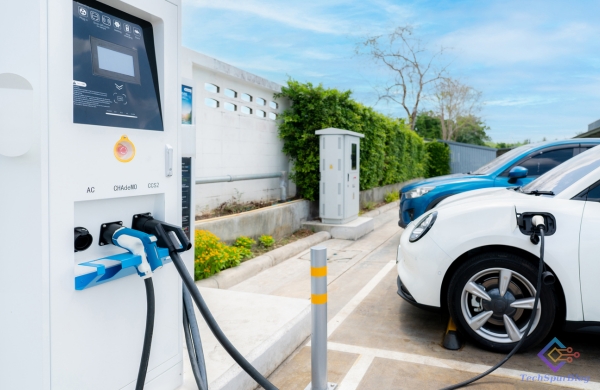
Electric cars, once a novelty, have become an integral part of the automotive landscape. They promise sustainability, reduced emissions, and a cleaner future. But what powers these vehicles, and how do they work? In this exploration of the engineering marvels behind Electric Vehicle Technology, we’ll delve into the intricacies that make electric cars like the Ioniq 6 by Hyundai not only possible but also practical. We’ll also discuss the option to lease an electric car, making this groundbreaking technology more accessible than ever.
The Heart of Electric Cars: The Electric Motor
At the core of every electric car is the electric motor. Unlike internal combustion engines (ICE) that rely on burning fossil fuels, electric motors are powered by electricity. Here’s how they work:
Electricity Conversion: When you plug in an electric car to charge it, electricity flows to the battery pack. This electricity is then converted into mechanical energy by the electric motor.
No Combustion: Electric motors don’t burn fuel; they create motion through the interaction of magnetic fields. This eliminates the need for fuel and reduces emissions to zero at the tailpipe.
Efficiency: Electric motors are incredibly efficient, typically converting around 85% to 90% of the electrical energy into usable power. In contrast, internal combustion engines are less efficient, with typical conversion rates around 20% to 30%.
Also Read: Tesla Model S and Model X UK Orders Now Include a Reacher
The Battery Pack: Energy Storage
Electric cars rely on large battery packs to store and provide energy for propulsion. These battery packs consist of thousands of individual lithium-ion cells, similar to the batteries in your smartphone but on a much larger scale. Here’s how the battery pack works:
Energy Storage: The battery pack stores electricity, which is used to power the electric motor. The larger the battery pack, the more energy it can store, resulting in longer driving ranges.
Charging: To charge an electric car, you plug it into a charging station, which provides electricity to the battery. Charging times can vary depending on the charger’s speed and the car’s battery capacity.
Regenerative Braking: Electric vehicles frequently employ regenerative braking, a technology that captures and stores energy during deceleration or braking, subsequently utilizing this energy to replenish the battery and enhance overall energy efficiency.
The Power Electronics: Control and Optimization
Electric cars rely on advanced power electronics to control the flow of electricity from the battery to the motor. Here’s how this system works:
Inverter: The inverter is a critical component that converts the direct current (DC) from the battery into alternating current (AC) for the electric motor. It also controls the motor’s speed and torque.
Battery Management System (BMS): The BMS monitors and manages the individual cells within the battery pack. It ensures that the cells are balanced, preventing overcharging or overheating.
Motor Controller: Responsible for overseeing the power supplied to the electric motor, the motor controller governs the vehicle’s speed and acceleration while also handling the intricacies of regenerative braking.
Also Read: XCV Panel – Extremely Conductive and Versatile Solar Technology
Range and Charging: Overcoming Challenges
The apprehension known as “range anxiety,” which pertains to the worry of depleting the battery before reaching your intended destination, has posed a notable apprehension for electric vehicle operators. Nevertheless, engineers have made notable strides in expanding the range and enhancing the charging infrastructure:
Battery Advancements: Continuous progress in battery technology has resulted in increased energy density, enabling extended driving distances on a single charge.
Fast Charging: High-speed charging stations, exemplified by Tesla’s Superchargers, can deliver a substantial amount of charge within a brief period, rendering long-distance journeys more feasible.
Charging Networks: Charging infrastructure is expanding rapidly, with public charging stations becoming increasingly accessible. Companies like Tesla and Electrify America are investing heavily in building charging networks.
The Ioniq 6 by Hyundai: A Technological Marvel
The Ioniq 6 by Hyundai is an example of the engineering excellence in Electric Vehicle Technology. This vehicle showcases Hyundai’s commitment to sustainability and innovation. Here are some key features:
Advanced Battery Technology: The Ioniq 6 employs cutting-edge battery technology, offering an impressive range on a single charge.
Smart Connectivity: The car is equipped with a sophisticated infotainment system, providing real-time data on battery status, range estimation, and charging locations.
Efficient Design: Hyundai has designed the Ioniq 6 for aerodynamic efficiency, reducing drag and enhancing overall performance.
Leasing an Electric Car: Accessibility and Sustainability
For many consumers, the option to lease an electric car has made adopting this new technology more accessible. Leasing offers several advantages:
Lower Upfront Costs: Leasing generally entails a smaller upfront payment in contrast to buying, simplifying the process of acquiring an electric car.
Warranty Coverage: The majority of lease contracts encompass warranty protection throughout the lease’s duration, ensuring confidence when it comes to maintenance and repairs.
Technology Upgrades: Leasing affords you the opportunity to remain current with the most recent developments in electric vehicle technology. Upon the conclusion of your lease term, you have the option to lease a more recent model featuring enhanced features.
Also Read: Solar-Powered Gadgets for Unplugged Adventures
The Future of Electric Cars
Electric car technology continues to evolve at a rapid pace. Engineers are working on improving battery efficiency, charging infrastructure, and affordability. As more automakers enter the electric vehicle market, consumers can expect a wider range of options and competitive pricing.
In conclusion, understanding the engineering behind electric car technology helps demystify these innovative vehicles. From the electric motor and battery pack to the power electronics and smart connectivity, every component plays a crucial role in making electric cars like the Ioniq 6 by Hyundai a reality. As the world transitions toward cleaner transportation solutions, electric cars are poised to play a central role in shaping the future of mobility.

Leave a Reply